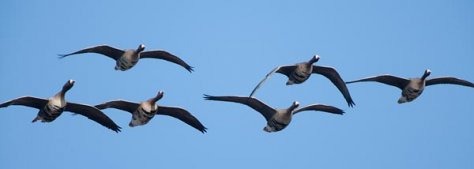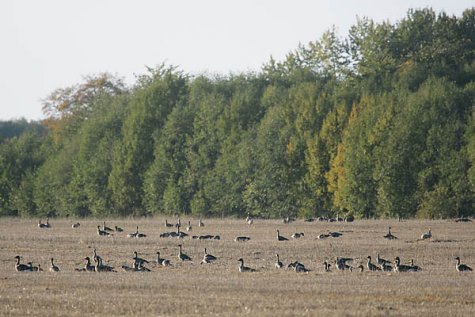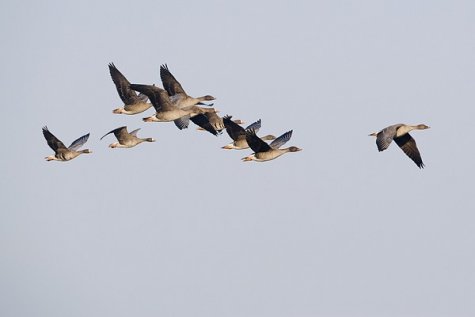Bean geese and greater white-fronted geese migrating
Photos: Arne Ader
Translation: Liis
The passing migration of geese proceeds by waves here and usually ends with the beginning of November. The wind turns to northerly and we can expect a mass migration of white-fronted geese and bean geese that have nested in the Russian tundra.
Greater white-fronted geese
Greater white-fronted geese Suur-laukhani
The white patch at the base of the beak of greater white-fronted geese is well visible and makes it possible to distinguish them when they sometimes migrate in mixed flocks with bean geese. The white blaze is quite large, reaching from the base of the beak to the forehead.
As a rule the large flocks of white-fronted geese pass by us without stopping and they don’t stay to feed on our coastal pastures. On some days the migration can be very massive.
In the flight view we can see the dark patches on the bellies of the adults; the beak is pink as that of grey geese and the legs orange. The young birds lack both the white blaze and the dark spots on the belly. Compared to other geese the calls of white-fronted geese are melodious and more high-pitched – it is clearly audible.
The number of lesser white-fronted geese has become very small and ornithologists count only up to some tens of individuals during the autumn migration.
Bean geese on stubble field. Tamme, the shore of lake Võrtsjärv
Bean goose Rabahani Anser fabalis
Bean geese often stop inland on their migration to forage and if you manage to watch the cautious birds the juveniles can be distinguished from the adults by their more yellow legs.
These are so-called dark geese – head and neck dark brown, with greyish-brown back feathers with light margins, the belly plumage lacks the patches of white-fronted geese. Beak black with orange pattern, legs orange. A nasal trumpeting sounds from migrating bean goose flocks.
Bean geese and greater white-fronted geese











